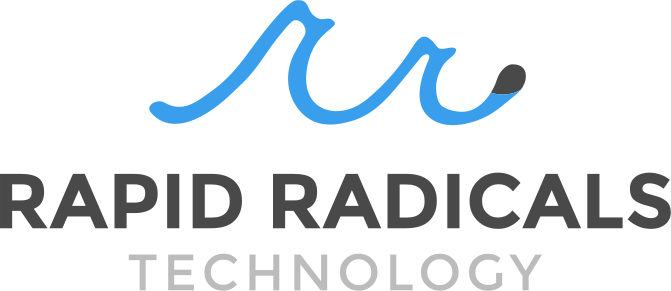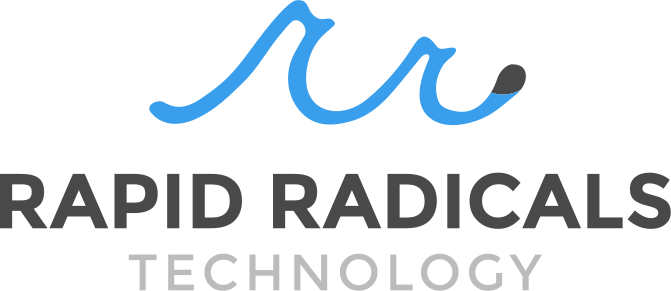Phase I Pilot Project Case Study
about this project
Rapid Radicals Technology’s (RRT’s) advanced, high-rate wastewater treatment system pilot plant operated at South Shore Water Reclamation Facility (SSWRF) in Oak Creek, WI, USA is a collaborative effort between RRT, Marquette University (MU), and the Milwaukee Metropolitan Sewerage District (MMSD). The Phase I Pilot System housed in a 40-ft shipping container combines high-rate solids removal and ozone-based advanced oxidation for rapid and effective treatment during high-intensity precipitation events to eliminate sewer overflows and basement backups. Rapid solids removal is achieved by either conventional clarification, chemically enhanced primary treatment, or cloth media filtration followed by organics oxidation and disinfection using an ozone-based advanced oxidation process.
about this project
Rapid Radicals Technology’s (RRT’s) advanced, high-rate wastewater treatment system pilot plant operated at South Shore Water Reclamation Facility (SSWRF) in Oak Creek, WI, USA is a collaborative effort between RRT, Marquette University (MU), and the Milwaukee Metropolitan Sewerage District (MMSD). The Phase I Pilot System housed in a 40-ft shipping container combines high-rate solids removal and ozone-based advanced oxidation for rapid and effective treatment during high-intensity precipitation events to eliminate sewer overflows and basement backups. Rapid solids removal is achieved by either conventional clarification, chemically enhanced primary treatment, or cloth media filtration followed by organics oxidation and disinfection using an ozone-based advanced oxidation process.
PERFORMANCE GOALS
The performance goals of the Phase I pilot are to meet discharge permit requirements for BOD (30 mg/L), TSS (30 mg/L), and E. coli (400 CFU/100 mL) in 35 min or less of total treatment time. Shown below, the oxidation system consists of three contact tanks, each with a detention time of approximately seven (7) min. Additionally, three key technology factors were evaluated during this project: (1) feasibility (can it meet permit requirements in the required detention time?), (2) compatibility (does each technology combination work well together?), and (3) scalability (does it retain performance and kinetics at a pilot scale?). As shown in the data below, all three technology combinations were capable of meeting discharge permit requirements for BOD, TSS, and E. coli at the pilot scale tested.
PERFORMANCE GOALS
The performance goals of the Phase I pilot are to meet discharge permit requirements for BOD (30 mg/L), TSS (30 mg/L), and E. coli (400 CFU/100 mL) in 35 min or less of total treatment time. Shown below, the oxidation system consists of three contact tanks, each with a detention time of approximately seven (7) min. Additionally, three key technology factors were evaluated during this project: (1) feasibility (can it meet permit requirements in the required detention time?), (2) compatibility (does each technology combination work well together?), and (3) scalability (does it retain performance and kinetics at a pilot scale?). As shown in the data below, all three technology combinations were capable of meeting discharge permit requirements for BOD, TSS, and E. coli at the pilot scale tested.
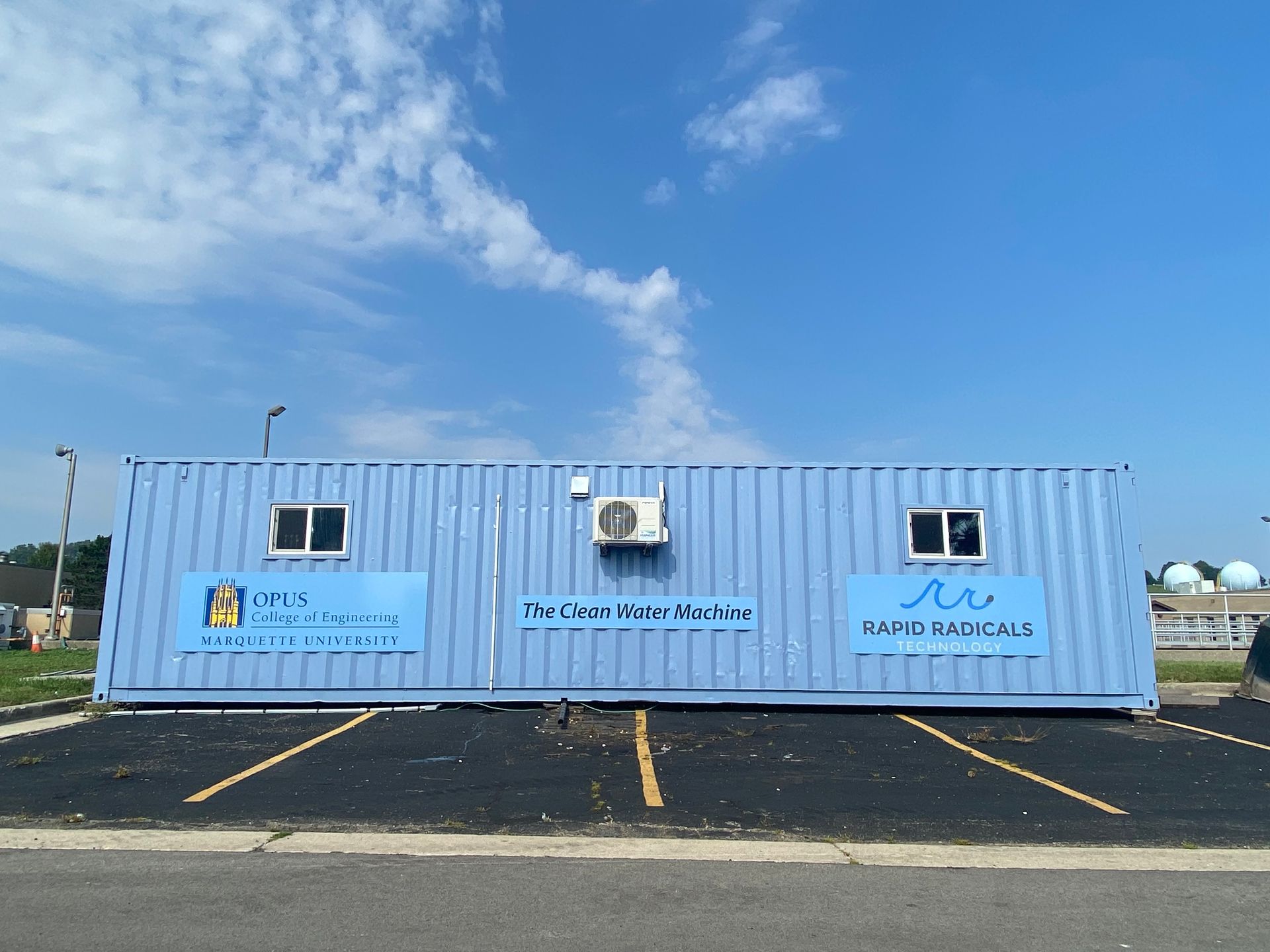
THE NEXT PHASE:
The next phase of technology research and development is the Rapid Radicals Phase II pilot, the Torrent3 Treatment System, which was recently launched at an off-site location selected as a potential site for high-rate treatment in MMSD’s service area. The specifications for the Torrent3 are shown below, and performance data will be available in December 2023.
THE NEXT PHASE:
The next phase of technology research and development is the Rapid Radicals Phase II pilot, the Torrent3 Treatment System, which was recently launched at an off-site location selected as a potential site for high-rate treatment in MMSD’s service area. The specifications for the Torrent3 are shown below, and performance data will be available in December 2023.
| Phase I Pilot (Optimized) | Phase II Pilot (Underway) | |
|---|---|---|
| Flow rate | 20L per minute | 380L per minute |
| Total Treatment Time | 32 Minutes | 20 Minutes |
| Water Temperature | 24°C | 20°C |
| Nominal energy costs (ozone production) | $0.055/m3 | $0.036/m3 |
| Influent wastewater | Primary influent diluted with treated SSWRF effluent | Combined sewer water (diluted if necessary with hydrant water) |
| Phase I Pilot (Optimized) | Phase II Pilot (Underway) | |
|---|---|---|
| Flow rate | 20L per minute | 380L per minute |
| Total Treatment Time | 32 Minutes | 20 Minutes |
| Water Temperature | 24°C | 20°C |
| Nominal energy costs (ozone production) | $0.055/m3 | $0.036/m3 |
| Influent wastewater | Primary influent diluted with treated SSWRF effluent | Combined sewer water (diluted if necessary with hydrant water) |
Phase I Pilot Performance Data
CONVENTIONAL CLARIFICATION:
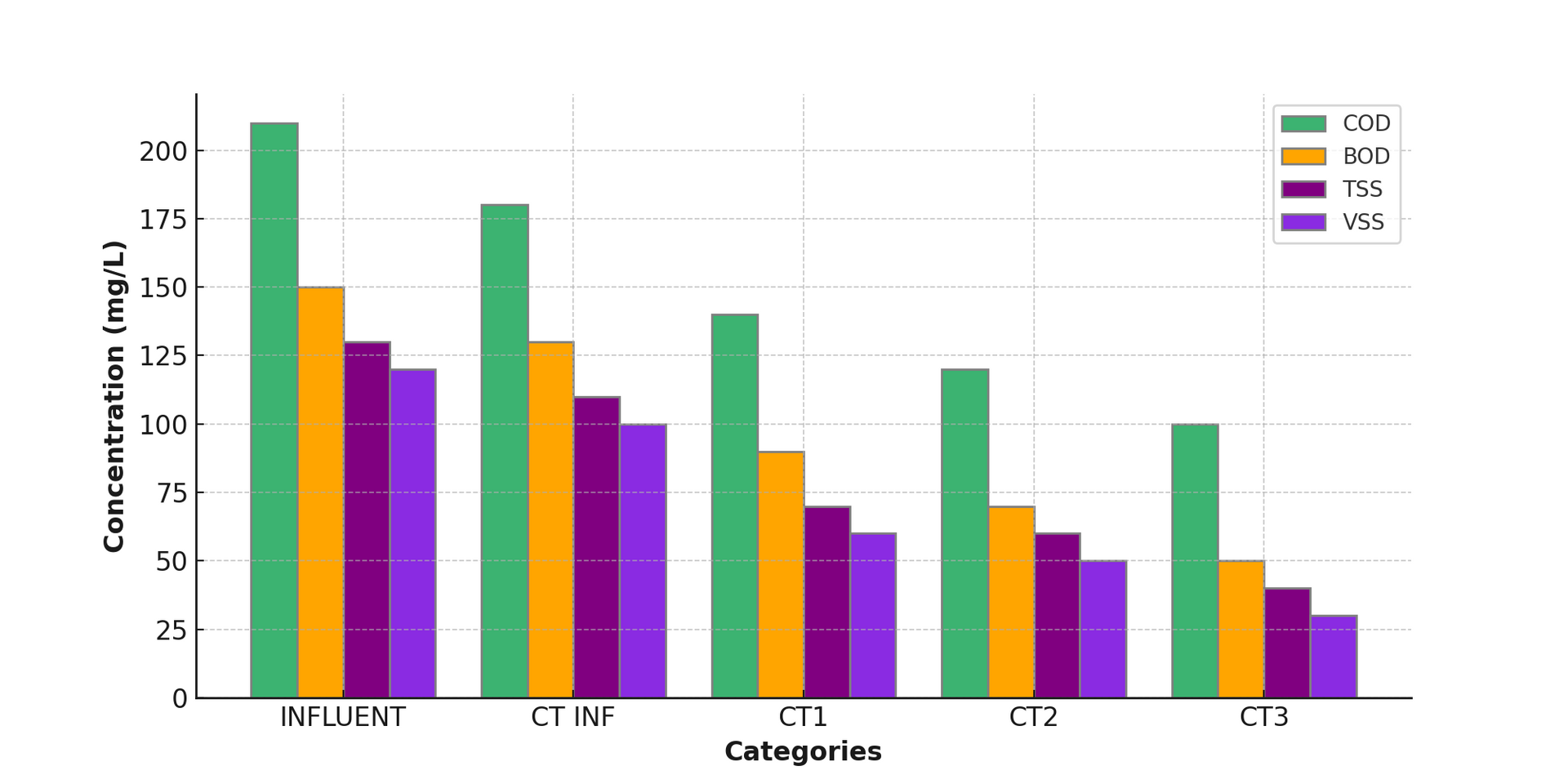
| Contaminant | Influent | Effluent | % Removal |
|---|---|---|---|
| BOD | 67 ± 2 | 20 ± 1 | 70 ± 1 |
| COD | 210 ± 7 | 89 ± 3 | 58 ± 2 |
| TSS | 110 ± 2 | 27 ± 1 | 75 ± 1 |
| E-coli | 10^9 | 190 ± 50 | 99.99999 |
| Contaminant | Influent | Effluent | % Removal |
|---|---|---|---|
| BOD | 67 ± 2 | 20 ± 1 | 70 ± 1 |
| COD | 210 ± 7 | 89 ± 3 | 58 ± 2 |
| TSS | 110 ± 2 | 27 ± 1 | 75 ± 1 |
| E-coli | 10^9 | 190 ± 50 | 99.99999 |
CHEMICALLY ENHANCED PRIMARY TREATMENT:
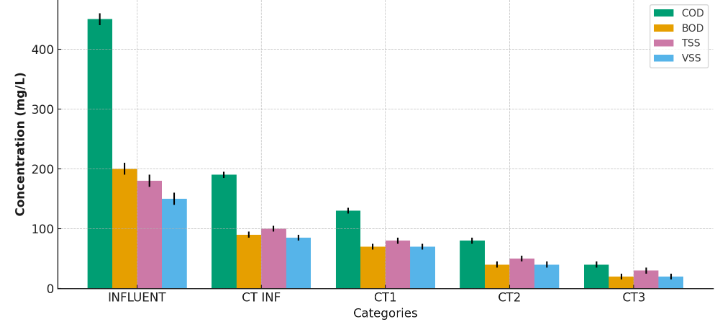
| Contaminant | Influent | Effluent | % Removal |
|---|---|---|---|
| BOD | 150 ± 2 | 12 ± 1 | 92 ± 1 |
| COD | 420 ± 7 | 61 ± 8 | 85 ± 3 |
| TSS | 180 ± 2 | 13 ± 1 | 93 ± 2 |
| E-coli | 10^9 | >30 (below detection) | 99.99999 |
| Contaminant | Influent | Effluent | % Removal |
|---|---|---|---|
| BOD | 150 ± 2 | 12 ± 1 | 92 ± 1 |
| COD | 420 ± 7 | 61 ± 8 | 85 ± 3 |
| TSS | 180 ± 30 | 13 ± 1 | 93 ± 2 |
| E-coli | 10^9 | <30 (below detection) | 99.99999 |
CLOTH MEDIA FILTRATION:
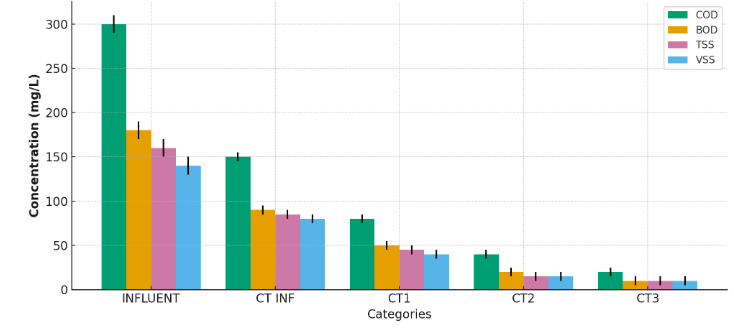
| Contaminant | Influent | Effluent | % Removal |
|---|---|---|---|
| BOD | 150 ± 20 | 6 ± 2 | 96 ± 3 |
| COD | 280 ± 40 | 17 ± 5 | 94 ± 2 |
| TSS | 160 ± 10 | 27 ± 1 | 93 ± 2 |
| E-coli | 10^8 | 190 ± 50 | 99.99999 |
| Contaminant | Influent | Effluent | % Removal |
|---|---|---|---|
| BOD | 150 ± 20 | 6 ± 2 | 96 ± 3 |
| COD | 280 ± 40 | 17 ± 5 | 94 ± 2 |
| TSS | 160 ± 10 | 12 ± 5 | 93 ± 2 |
| E-coli | 10^8 | <30 (below detection) | 99.99999 |
